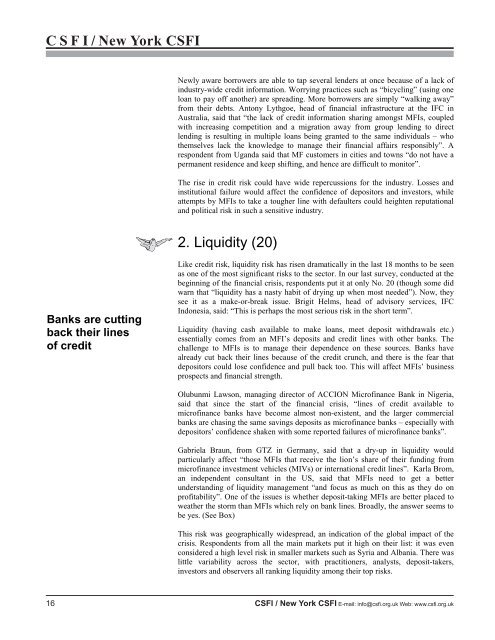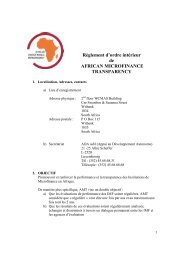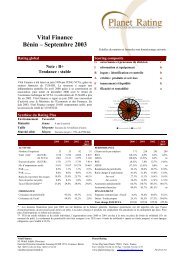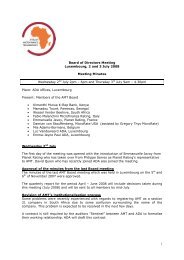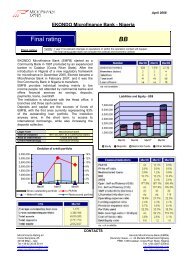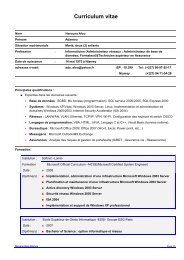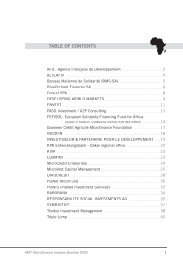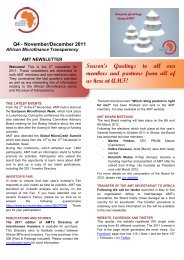Microfinance Banana Skins 2009 Microfinance Banana Skins 2009 - Le ...
Microfinance Banana Skins 2009 Microfinance Banana Skins 2009 - Le ...
Microfinance Banana Skins 2009 Microfinance Banana Skins 2009 - Le ...
You also want an ePaper? Increase the reach of your titles
YUMPU automatically turns print PDFs into web optimized ePapers that Google loves.
C S F I / New York CSFINewly aware borrowers are able to tap several lenders at once because of a lack ofindustry-wide credit information. Worrying practices such as “bicycling” (using oneloan to pay off another) are spreading. More borrowers are simply “walking away”from their debts. Antony Lythgoe, head of financial infrastructure at the IFC inAustralia, said that “the lack of credit information sharing amongst MFIs, coupledwith increasing competition and a migration away from group lending to directlending is resulting in multiple loans being granted to the same individuals – whothemselves lack the knowledge to manage their financial affairs responsibly”. Arespondent from Uganda said that MF customers in cities and towns “do not have apermanent residence and keep shifting, and hence are difficult to monitor”.The rise in credit risk could have wide repercussions for the industry. Losses andinstitutional failure would affect the confidence of depositors and investors, whileattempts by MFIs to take a tougher line with defaulters could heighten reputationaland political risk in such a sensitive industry.2. Liquidity (20)Banks are cuttingback their linesof creditLike credit risk, liquidity risk has risen dramatically in the last 18 months to be seenas one of the most significant risks to the sector. In our last survey, conducted at thebeginning of the financial crisis, respondents put it at only No. 20 (though some didwarn that “liquidity has a nasty habit of drying up when most needed”). Now, theysee it as a make-or-break issue. Brigit Helms, head of advisory services, IFCIndonesia, said: “This is perhaps the most serious risk in the short term”.Liquidity (having cash available to make loans, meet deposit withdrawals etc.)essentially comes from an MFI’s deposits and credit lines with other banks. Thechallenge to MFIs is to manage their dependence on these sources. Banks havealready cut back their lines because of the credit crunch, and there is the fear thatdepositors could lose confidence and pull back too. This will affect MFIs’ businessprospects and financial strength.Olubunmi Lawson, managing director of ACCION <strong>Microfinance</strong> Bank in Nigeria,said that since the start of the financial crisis, “lines of credit available tomicrofinance banks have become almost non-existent, and the larger commercialbanks are chasing the same savings deposits as microfinance banks – especially withdepositors’ confidence shaken with some reported failures of microfinance banks”.Gabriela Braun, from GTZ in Germany, said that a dry-up in liquidity wouldparticularly affect “those MFIs that receive the lion’s share of their funding frommicrofinance investment vehicles (MIVs) or international credit lines”. Karla Brom,an independent consultant in the US, said that MFIs need to get a betterunderstanding of liquidity management “and focus as much on this as they do onprofitability”. One of the issues is whether deposit-taking MFIs are better placed toweather the storm than MFIs which rely on bank lines. Broadly, the answer seems tobe yes. (See Box)This risk was geographically widespread, an indication of the global impact of thecrisis. Respondents from all the main markets put it high on their list: it was evenconsidered a high level risk in smaller markets such as Syria and Albania. There waslittle variability across the sector, with practitioners, analysts, deposit-takers,investors and observers all ranking liquidity among their top risks.16 CSFI / New York CSFI E-mail: info@csfi.org.uk Web: www.csfi.org.uk


